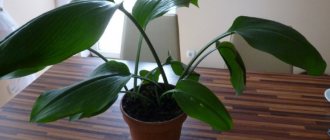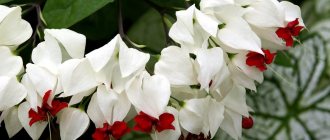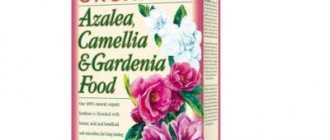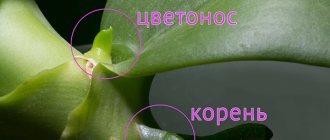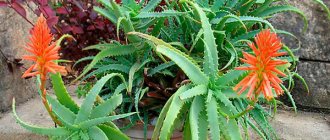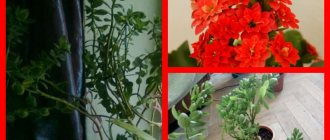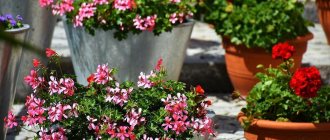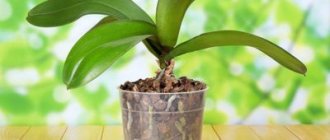A passionate florist selects pets so that, in a cramped window sill, they provide beauty that changes from season to season. Not many indoor plants enjoy winter flowering. Hippeastrum is a luxurious winter flower with several huge stars on one peduncle. Why does hippeastrum not bloom, how to stimulate the creation of a bouquet on the windowsill? We use the experience of many lovers of bulbous plants.
Description of the plant
This very decorative flower belongs to the Amaryllis family and is bulbous. The variety of different shapes and colors was created by the nature of South America and continued by flower growers. There are more than 80 varieties and 600 hybrids of this royal flower. A living bouquet retains its beauty for about two months.
Flowers up to 25 cm in diameter are collected in a bouquet consisting of several giants on one peduncle. The plant reproduces easily, by scales of bulbs, children and seeds. Moreover, after pollination of two different flowers, seeds can be used to obtain a new star color. For a flower to please, it only needs a bright window sill, indoor conditions, and a period of rest when preparations are underway for a new flowering. In good conditions, flowering is possible twice a year. Experienced flower growers can drive out the arrow by a certain date.
Hippeastrum care
Hippeastrum is a bulbous perennial that does not tolerate proximity to other indoor plants; in extreme cases, fern, ivy or aloe can be placed next to it.
This is interesting: any hippeastrum flower, ripened on the stem, lives no more than 10 days.
Lighting
The culture is tropical, so it loves the sun. The most suitable place for successful flowering and development of hippeastrum is the windowsill. The flowerpot should be protected from direct sunlight. To ensure that the leaves grow evenly and in different directions, and the flower itself maintains a proportional shape, turn it around its axis once a week.
Watering
Before the buds ripen and before active flowering begins, the plant is moistened very sparingly. Gradually, the amount of irrigation is increased during the period of growth and opening of flowers. As a result, the soil in the pot should be moist, but not wet.
During the early growing season, it is necessary to water once every 14 days, during the appearance and development of the peduncle - twice a week.
It is preferable to add liquid to the pan. Before irrigation, the water must be slightly heated near the radiator. After all the flowers have fallen, watering is slowly reduced, bringing it to the initial minimum.
Humidity
Despite the fact that the plant is exotic and grows in the wild in the subtropics, it does not tolerate excessive humidity. Maintain the level of 60-70%, the same applies to the situation when the flower is transplanted into the garden or garden.
The maximum permissible humidity in the room is 80%, but in this case the plant can quickly develop stagonosporosis.
Optimal temperature
For active and normal development of the plant, drafts and sudden temperature changes are undesirable. Frosts and cold weather are destructive for hippeastrum, especially for developing buds. It is best to place the exotic at a distance of one meter from the radiator or other heating devices.
Tip: during the hot season, it is recommended to transplant the flower from the pot to a flowerbed or garden.
The soil
If you are going to change the pot for the plant and are interested in how to plant hippeastrum, then you need to know what substrate is best to place it in.
It is recommended to prepare a mixed composition that will contain turf and leaf soil, humus and coarse sand. All ingredients must be mixed in equal proportions.
To ensure that the soil lasts longer and does not infect the root system in the future, it is recommended to sterilize it in advance. You can do this as follows:
- Pour the substrate into a smaller pan, preferably one without handles. Place it in a large bowl so that the distance between the two bottoms is about 5 centimeters.
- Fill the second container with water to the brim.
- Place the structure on the fire and after boiling, reduce it to low. In this form, it is necessary to sterilize the soil for an hour and a half.
Top dressing
Fertilizer should be introduced gradually before the period of active flowering, that is, from May to August. The frequency of feeding with additional minerals and substances is once every two weeks. Oversaturation with fertilizers can lead to the death of the plant.
It is recommended to select organic supplements prepared independently. Bird droppings or mullein are perfect - 250-300 grams are filled with 10 liters of water.
You can purchase complex fertilizers. It is better to consult the flower shop seller about the proportions.
How to control pests
It is better to prevent diseases and the presence of pests on hippeastrum than to deal with them later. Heavy soil, humidity, and fairly high temperatures are positive factors for the proliferation of microorganisms and insects.
The most common pests of this plant are scale insects, onion root mites, scale insects, hoverflies and nematodes.
As a preventive measure, you can make a weak soap solution and wash the leaves with a cotton pad or a clean cloth soaked in the mixture. If pests have become regular guests of your exotic beauty, then they need to be eliminated using more radical methods.
Important: if you are wondering why hippeastrum does not bloom, then the answer may be precisely the presence of a large number of pests.
Scale insects often settle in the root system. They suck out the juices, so the growth and flowering of the crop stops. To eliminate the unwanted guest, the onion is carefully treated with a mixture of karbofos.
The product is perfect for controlling other pests. In particular, if the hippeastrum suffers from mites or scale insects, spray it with actellik or karbofos.
How to trim
Dry or rotten leaves are removed using the traditional method - using a sharpened knife or pruning shears. The notch must be made obliquely, retreating 3-5 millimeters from the stem.
Pruning the roots of this plant is painful, so this procedure is not recommended for the lower part of the crop. Observe the temperature regime, and most importantly, choose a convenient and not too large pot for the flower.
How to make hippeastrum bloom?
The effectiveness of hippeastrum depends on the moment of acquisition, choice of soil, and maintenance regime. You can propagate the flower yourself, or you can buy it. At the same time, when choosing a bulb, it is necessary to strip it of its covering and examine it for signs of disease:
- Stagonosporosis is determined by a spot with a red border:
- dampness of scales indicates other fungal diseases;
- examine through a magnifying glass, detecting traces of insect pests;
- the bulb in the container should have dry covering scales.
The purchased specimen must be etched in a solution of potassium permanganate or a special preparation. Choose a pot slightly larger than the diameter of the bulb. Before filling with soil, create drainage, a layer of soil, clean sand on which to place the bulb. Add soil around and gently compact. The soil level in the pot should be one centimeter below the edge of the container so that it is possible to loosen the soil.
The soil consists of peat, sand and turf soil in equal parts. The plant is replanted every three years. One bulb is viable for 10 years if well maintained.
Why does hippeastrum not bloom and what to do at home?
Often, for beginning gardeners at home, hippeastrum does not bloom, only leaves develop. This indicates mistakes made when choosing the location and conditions of detention or planting. Perhaps the plant was not properly cared for, not fertilized enough, or conditions for a dormant period were not provided.
Next, we consider what in most cases leads to the absence of flowers, and what can be done to make the hippeastrum bloom.
No transfers
If you did not replant the flower after the dormant stage in December, then this must be done after flowering so that the bulb has time to replenish its reserves of nutrients. The lack of transplants has a detrimental effect on the flower - it is depleted and does not have the strength to form a peduncle.
Lack of fertilizers
The reason for not flowering may also be a lack of fertilizers. Regular feeding is required from the beginning of awakening until the end of summer. Only during dormancy the plant does not need fertilizer.
Incorrect conditions of detention
The main condition for maintenance is good lighting, at least 14 hours a day. The flower is very photophilous and heat-loving; it grows well on the windowsills of the south and east sides of the house. Sudden temperature changes and drafts should not be allowed.
Large pot size
If the pot size is very large, then the plant does not bloom for a long time. You can make hippeastrum bloom if you transplant it into a pot with a smaller diameter; this must be done as quickly as possible. In a cramped container, flowering will definitely occur.
Important! For hippeastrum, the optimal size of the pot is considered to be one in which the distance from the bulb to its edge is no more than 3 cm.
The bulb is too deep
A mistake that gardeners make may be excessive deepening of the bulb. The maximum permissible planting depth is 2/3 of the height of the bulb.
No rest period
Each plant has its own biorhythms, it is advisable not to disturb them. To get beautiful and large flowers, the hippeastrum must rest for 2-3 months. Lack of rest leads to excessive exhaustion, which can lead to death. During this period, the pot is placed in a dark, dry place with a temperature of 10–12°C, and watering and fertilizing are stopped.
Diseases or pests
Errors in care can cause plant disease. Overwatering or poor drainage causes fungal infections and root and bulb rot.
The most dangerous disease is stagonospora or “red burn.” Signs of the disease are red spots on the bulb and leaves. To save the plant, it is necessary to remove all affected areas, rotten roots, and treat the sections with antifungal drugs, such as Fitosporin.
After treatment, the bulb is thoroughly dried for about 7 days in a sunny place and examined to see if new lesions have appeared. If everything is fine, then the bulb is planted 1/3 full in a new pot with a new substrate. Later, if the bulb has recovered, add a little more soil. Until recovery, water moderately, constantly monitoring the condition of the plant.
Hippeastrum can be damaged by a number of pests, such as:
- worm,
- spider mite,
- scale insect,
- nematodes.
If you notice small bugs, larvae, and the plant is not developing well, white and red stripes, small tubercles or holes appear on the inside of the leaves, then treat it against pests with any insecticide.
Did you know? In 2012, during the Mars-500 project to simulate a flight to Mars, testers successfully forced a hippeastrum flower.
Conditions for flowering hippeastrum
There are several determining reasons why hippeastrum does not bloom at home. To make it decorative, you need to meet a few simple conditions:
- cramped pot;
- bulb planting depth;
- do not trim the peduncle after flowering;
- do not feed unrooted plants;
- do not feed before flowering;
- create a period of rest.
Hippeastrum is loved by gardeners for its unpretentiousness. It easily tolerates dry air in an apartment with central heating. During the rest period, it is satisfied with darkness and temperatures up to 13 degrees. At this time, the bulb accumulates energy for flowering. How to make hippeastrum bloom?
A cramped pot does not allow the plant to fatten. Every time you replant after three years, you should change the pot, but so that the distance from the edges to the bulb is 1.5-2 cm. The planting depth should not exceed half the body of the bulb. In this case, the plants are watered through a tray, without soaking the thickened scaly root. After the lump is wet, the remaining water is drained from the pan. Each newly purchased plant must be marked with the name of the variety and time of purchase.
Plants are fed only after rooting. Sometimes it happens that the purchased bulb blooms earlier. If you shake it by the arrow, the bulb will move. Then, despite flowering, there is no need to feed. Wait for rooting, the signal will be growing leaves, then you can fertilize. Sometimes this period takes several months. There is no need to feed the plants during the dormant period before flowering. If there are no leaves, watering is also stopped for a month. After this, the plant will throw out an arrow, and then you can start fertilizing watering.
Despite the recommendations, the hippeastrum does not bloom, what should I do? You can use a radical method. For the summer, arrange the stubborn man outdoors at the dacha. In summer it will grow a large rosette of leaves. Before the first frost, the plant must be dug up and placed indoors or in a greenhouse to dry. When the leaves dry out, they transfer nutrients to the bulb. You should wait for natural drying. This will transfer the nutrients to the bulb.
Now plant the bulb in a pot and put it away for a month in a dark, cool place. Flowering will be long and abundant. Creating a dormant period for hippeastrum is a prerequisite for obtaining a flowering plant. Proper care and control of pests and diseases will allow you to get a flowering plant even twice a year.
Features of the flowering period
Flowering occurs after the dormant stage. In the second year after planting, the bulb significantly increases in size, and peduncles form in February. To awaken the flower, move it closer to the sun and water it. It is advisable to replant it in fresh soil so that it feeds on nutrients and can accumulate energy for lush and large flowers.
The first flowers will delight you 8–10 weeks after the plant awakens.
When the peduncle emerging from the bulb reaches 15 cm, it is necessary to begin feeding the plant regularly. Then, when the leaves appear, you need to continue caring for the flower, regularly watering and feeding it every 10 days. When the fourth leaf appears, feeding should be stopped.
Hippeastrum blooms for 2-3 months. To keep the flowers longer, the temperature is reduced by several degrees. The number of peduncles depends on the size of the bulb and care - a large one may have three or more peduncles. If there is enough moisture, sunlight and nutrients, the flowers are large, last a long time, and the leaves are bright, green and smooth.
If not cared for properly, the flowers are small and fall off early, the leaves are pale and limp.
To prevent the hippeastrum from turning over under the weight of large flowers, it is advisable to purchase heavy ceramic pots.
It is necessary to wait for the peduncle to dry after the flower has withered, and then carefully remove it. You should not cut it right away, as valuable substances come from it.
Did you know? Hippeastrum translated from ancient Greek means “horseman star”. It is sometimes called the "knight's star" because of its large and beautiful flowers.
What to do to make hippeastrum bloom
If all the rules for caring for hippeastrum are followed, but it does not bloom, then you can resort to some tricks. First, you should plant the flower in open ground for the summer.
Another trick is forcing the bulbs. It is very simple to do and consists of two stages:
The plant will soon thank you for your care. As a rule, two months after the start of the second stage of forcing, the hippeastrum begins to bloom. If the flower is provided with proper care, it will certainly give its owners abundant blooms.
Source
The soil or pot is not suitable for the plant
Each plant requires a certain soil composition of suitable acidity. For example, among flowering plants, gardenia and camellia like acidic soil, slightly acidic soil - fuchsia, anthurium, jasmine, spathiphyllum, alkaline - adenium, neutral - aphelandra, pelargonium, rose and others. Over time, any soil, even universal soil, begins to change its properties under indoor conditions and home care of plants due to applied fertilizers or hard water. That is why each plant needs to change the soil at least once every two years, and renew it annually in the spring. Particularly careful owners periodically additionally measure the acidity of the soil in which their flowers grow.
Now about the potty. When replanting, it is recommended to choose a pot whose diameter is only 2-6 cm larger than the previous one (depending on how much time has passed since the last transplant and how the plant has grown during this period). The main condition is that after transplanting the plant into a new pot, its roots should fit there freely, maintaining some distance from the walls of the container. But this distance should not be too large - otherwise the roots of the flower may begin to grow, and it will spend the bulk of the reserves on their development, and not on flowering.
Make sure that there are drainage holes at the bottom of the pot - otherwise the liquid will stagnate in the soil and the plant will begin to rot. The latter is unlikely to promote flowering.
Presence of diseases and pests
Experts attribute insect attacks or diseases to the sources of the lack of buds. They will be discussed below.
Stagonosporosis or “red bulb burn”
It is a dangerous type of infection. Symptoms of its appearance include stains of a brownish-reddish hue and small dotted inclusions. The transition of the disease to the aboveground part of the plant threatens its death.
The appearance of the first signs requires active action: the bush is pulled out of the pot and all affected areas are cut off with a sharp, disinfected knife, including 4-6 mm of healthy tissue.
The sections are treated with activated carbon powder and Funzadol, mixed in equal proportions. After clearing the root system of soil, the plant is transplanted into the next box with fresh substrate.
The earth is additionally cleaned with a hot solution of potassium permanganate, the bulb is planted superficially - this will help control its general condition. After the risk of recurrence of infection has disappeared, add soil to the container and continue to care for the hipeastrum as usual.
Anthracosis and late blight
It affects the plant when planted in open ground. The infection develops from fungal spores, which, with sufficient moisture, easily move to healthy parts of the bush.
Attention! If the plant has mechanical damage or a potassium deficiency, the spores spread more actively.
Symptoms of damage include dark spots on the foliage and bulb, and a decrease in their elasticity. Treatment consists of excision of all affected areas, removal of affected leaves and covering all sections with a mixture of activated carbon and Fundazol. The soil is cleaned with 1% Bordeaux mixture.
Pests
Insect attacks on the crop greatly weaken it; the result of the attacks is the absence of buds and a deterioration in the general condition. If the problem is ignored, the plant quickly dies. Common pests that attack hippeastrum include:
To reduce the likelihood of insect damage, open soil is treated with copper sulfate before replanting. Detected parasites are washed off with a napkin previously moistened in a soap solution. If the measure does not give the expected effect, then re-treatment should be done with one of the insecticides - over the entire green part of the plant. The procedure is performed twice, with an interval of 14-21 days.
Important! Many problems with fungal infections and parasitic organisms are associated with attempts to plant hippeastrum in soil taken from the street.
Soil from the street is almost always contaminated with spores and larvae; before planting, it requires sterilization with hot water and special products sold in flower shops.
Growing Tips
Indoor Hippeástrum has some features that are very important to take into account to obtain full flowering:
- varieties and hybrid forms with light and white flowers are capable of producing a small amount of full-fledged seed material;
- in summer, hippeastrum is best transferred to the garden or buried in the ground, which will improve the decorative characteristics of the plant;
- Hippeástrum is one of the indoor plants whose flowering time can be quite easily adjusted;
- The flowering time of each hippeastrum flower does not exceed ten days, regardless of care.
The plant is dormant
Usually this period falls during the cold season. In winter, most plants do not bloom, they do not grow leaves or shoots. At this time, gardeners traditionally reduce watering and various types of processing. Of course, among the plants there are exceptions that can bloom in winter - some types of orchids, Schlumbergera (Decembrist), amaryllis and hippeastrum, cyclamen, azalea and some others. If they don’t bloom or suddenly drop their buds, it means you are violating the conditions of care (in most cases). We will talk about this below, but for now let’s return to “relaxing” plants. The main thing you should do at this stage is not to interfere with their rest. A new stage of growth and flowering awaits them next season.
The plant does not have enough fertilizer or there is too much of it
Let's move on to what you're doing wrong. The lack of any type of care or its excess directly affects the development process of the plant and - directly or indirectly - the process of its flowering. If your flowers lack the necessary substances, this is logical. It's another matter if they are overfed. In particular, some novice gardeners literally “flood” the plant with nitrogen fertilizers necessary for growth, but at the same time forget about phosphorus and potassium fertilizers, which are needed just for flowering to begin. Everything is good in moderation - this is the main thing to remember when choosing fertilizers for indoor plants. And it is also very advisable to carefully read the instructions supplied with them.
How to propagate a flower
Tropical beauties reproduce both vegetatively and by seed.
For the first option you need to do the following:
- In order for the procedure to be successful, choose the strongest, strongest onion.
- Cut it in half so that the same amount of scales and bottom remains on both sides.
- Sprinkle the cut of the onion with activated carbon.
- Plant the slices in fresh peat and cover it on top. Stomp it down a little.
- After 45-60 days, noticeable babies should appear. By spring, they can be transplanted into pots for further development.
To obtain the second propagation option, it is necessary to forcefully, that is, artificially pollinate.
This is interesting: hippeastrum rarely blooms in the first two years of life and, as a rule, does not retain its maternal properties.
To ensure that the seeds hatch accurately, it is recommended to sow them immediately after collection. For planting, prepare a small pot with a drainage bottom, a substrate selected from a flower shop, several small stones, purified and slightly warm water, and seeds. Follow these instructions to propagate this plant from seedlings:
- Pour soil into the pot up to the middle of the container, placing several stones in the mixture at a distance of 2-3 millimeters from each other.
- Moisten the soil slightly.
- Plant 7-10 hippeastrum seeds, distributing them evenly over the entire area of the pot.
- Sprinkle the substrate on top, a layer of no more than 3 millimeters. Wrap the container with cling film and leave at room temperature.
- From time to time, moisten the substrate and open an improvised greenhouse so that the soil “breathes”.
- Plant the seedlings after 30-45 days.
Correct choice of planting material
Only large, dense bulbs should be selected for planting. If there are dry scales on its surface, then this is a completely natural condition. Before planting, remove these dry scales, as well as dried roots.
After this, disinfect the bulb, even if it looks healthy, that is, there are no areas of rotting on its surface. Disinfection is done in a manganese solution, where the bulb is immersed for 20 minutes. The color of the manganese solution should be light red.
Of course, by the time of planting you must have the soil prepared. For normal growth of hippeastrum, purchased soil for flowering plants is quite suitable. Just add a little clean river sand. There is no need to fertilize the acquired land, since it is already saturated with useful substances.
